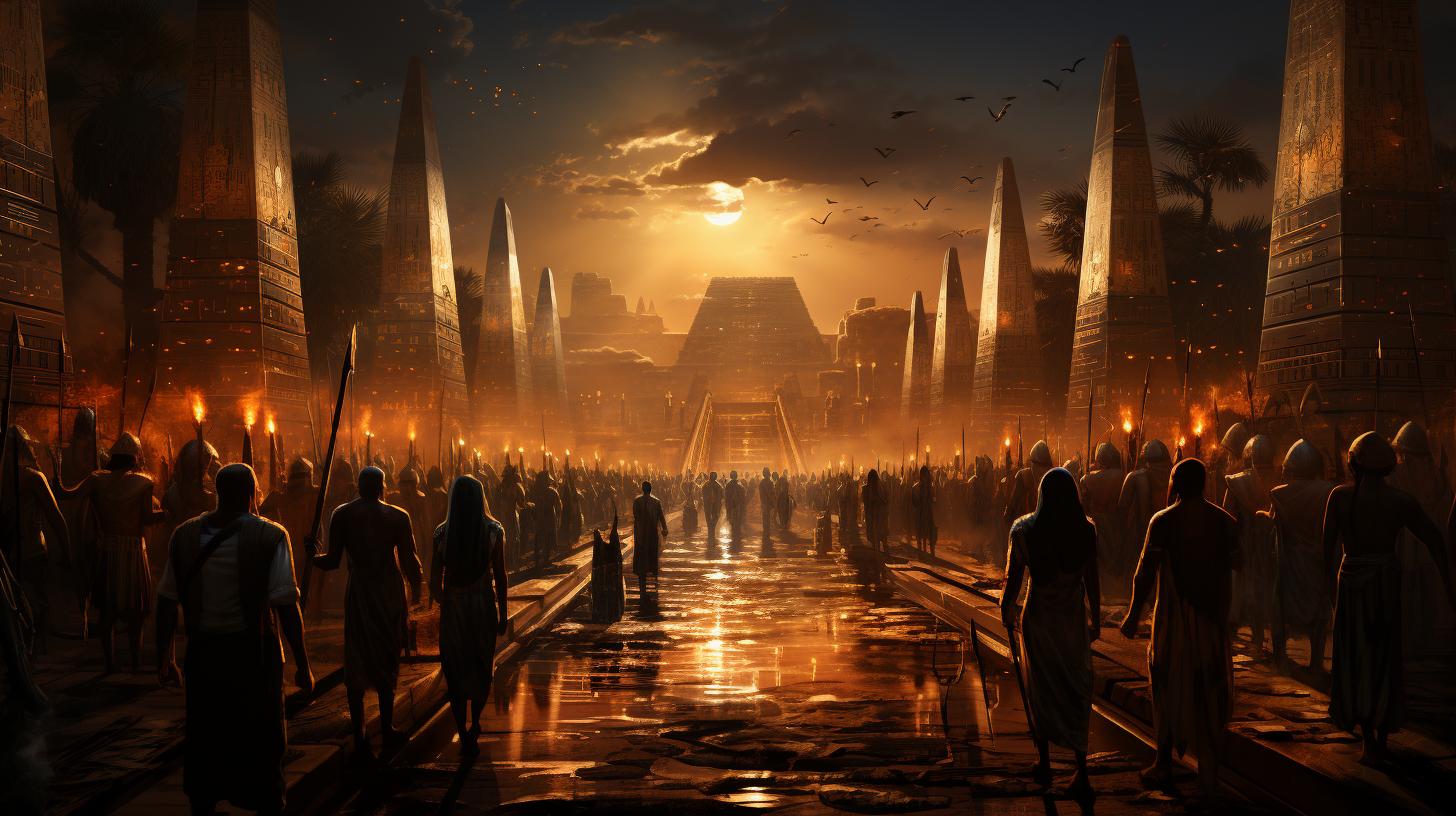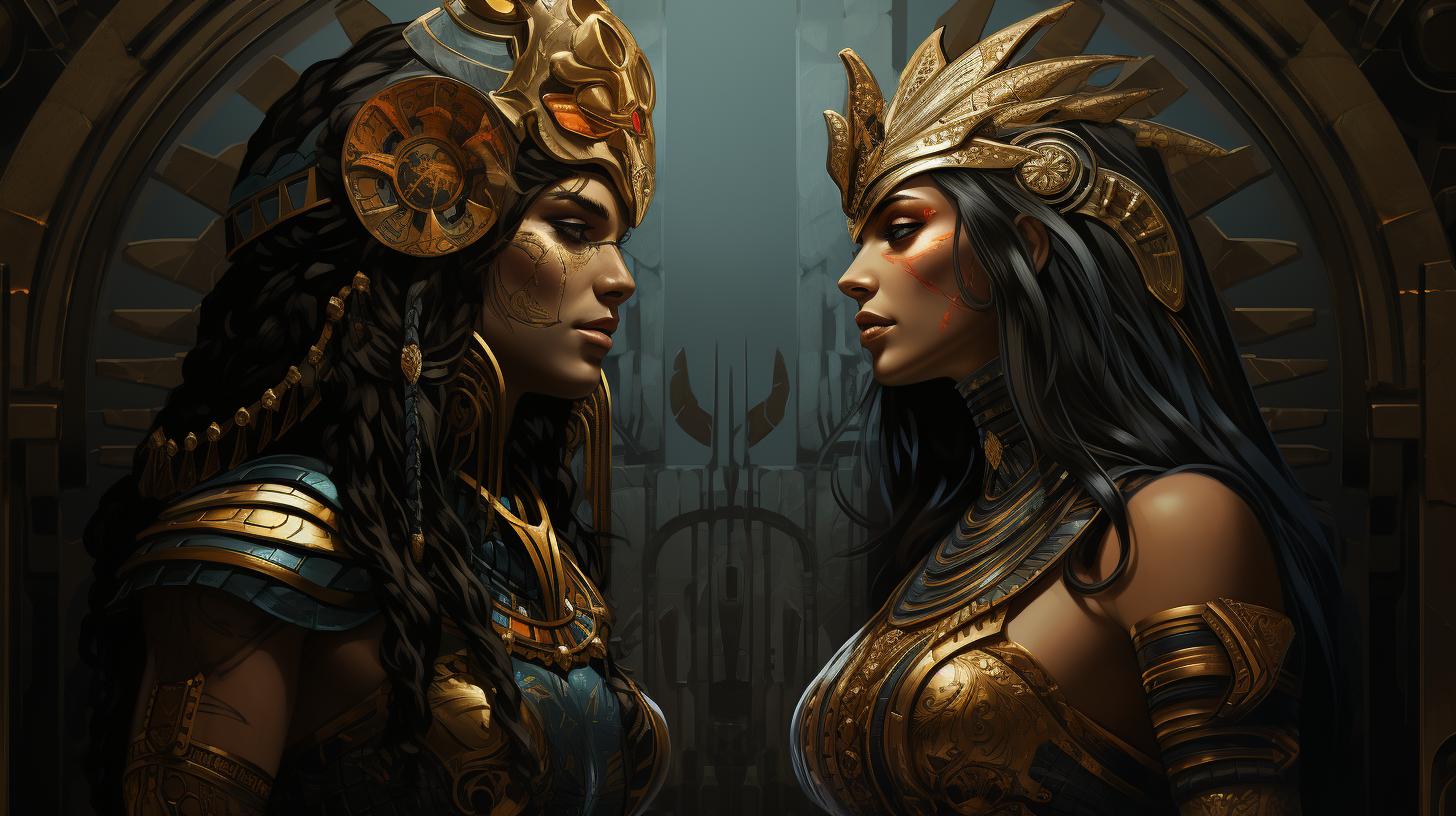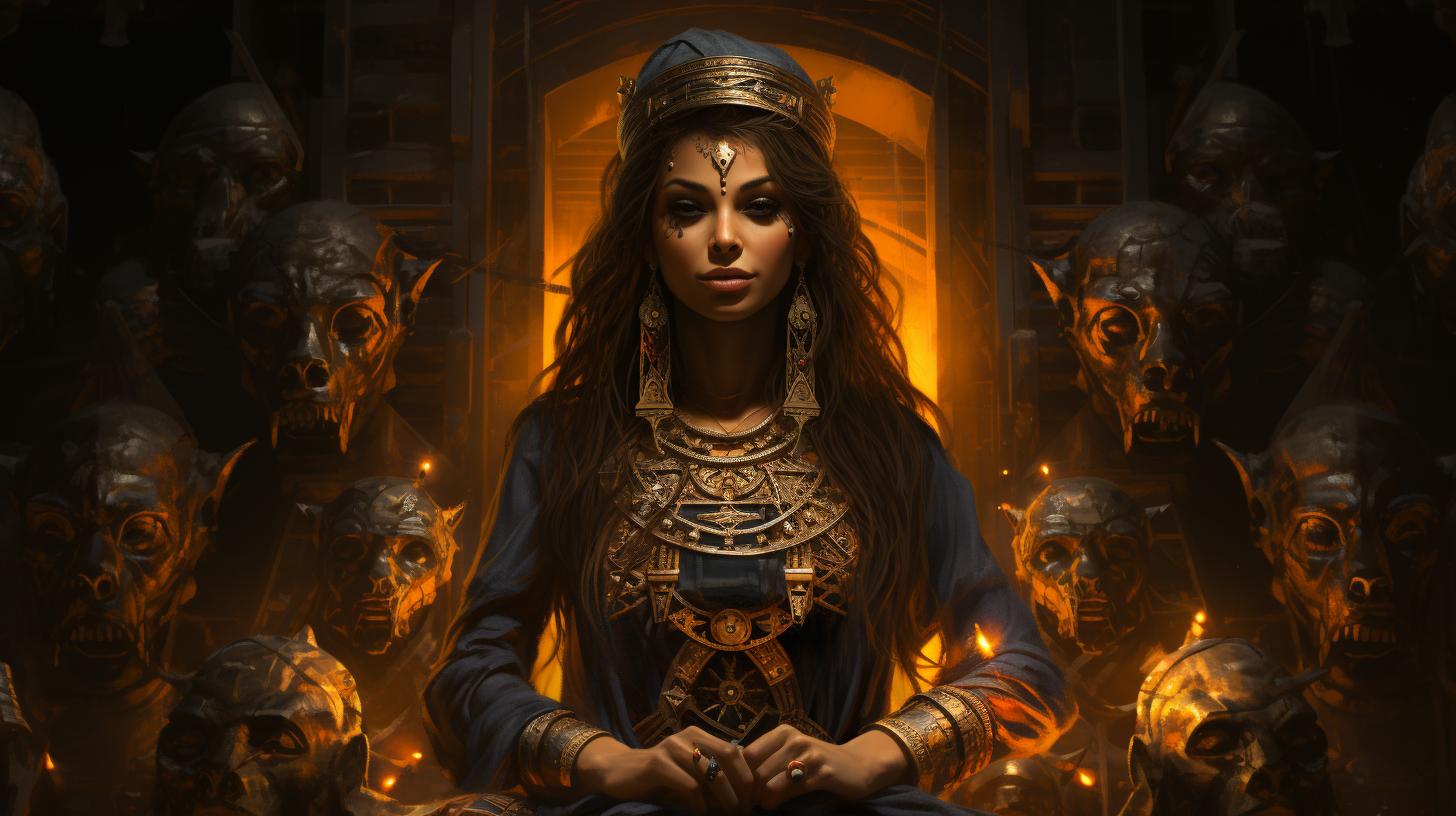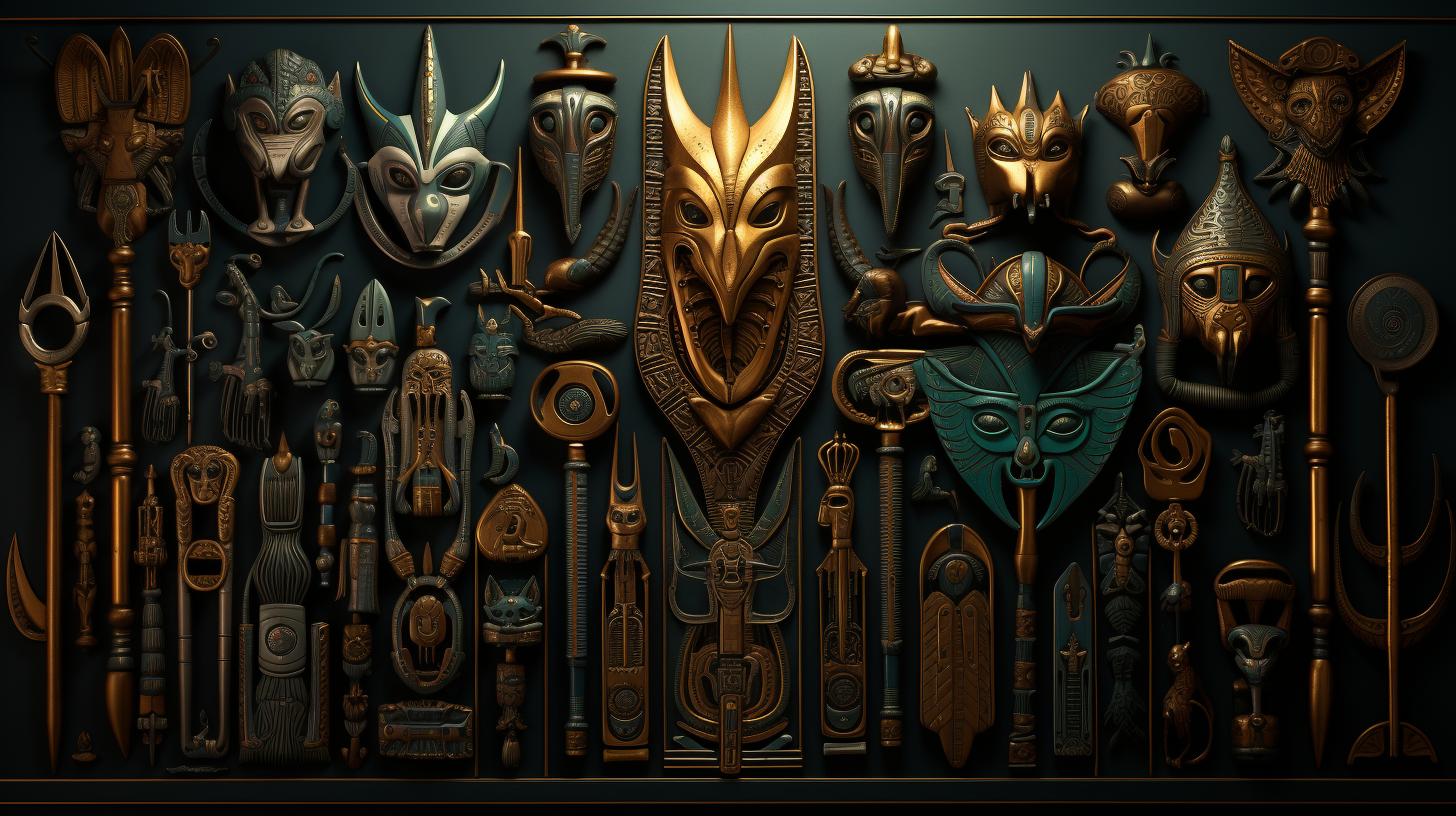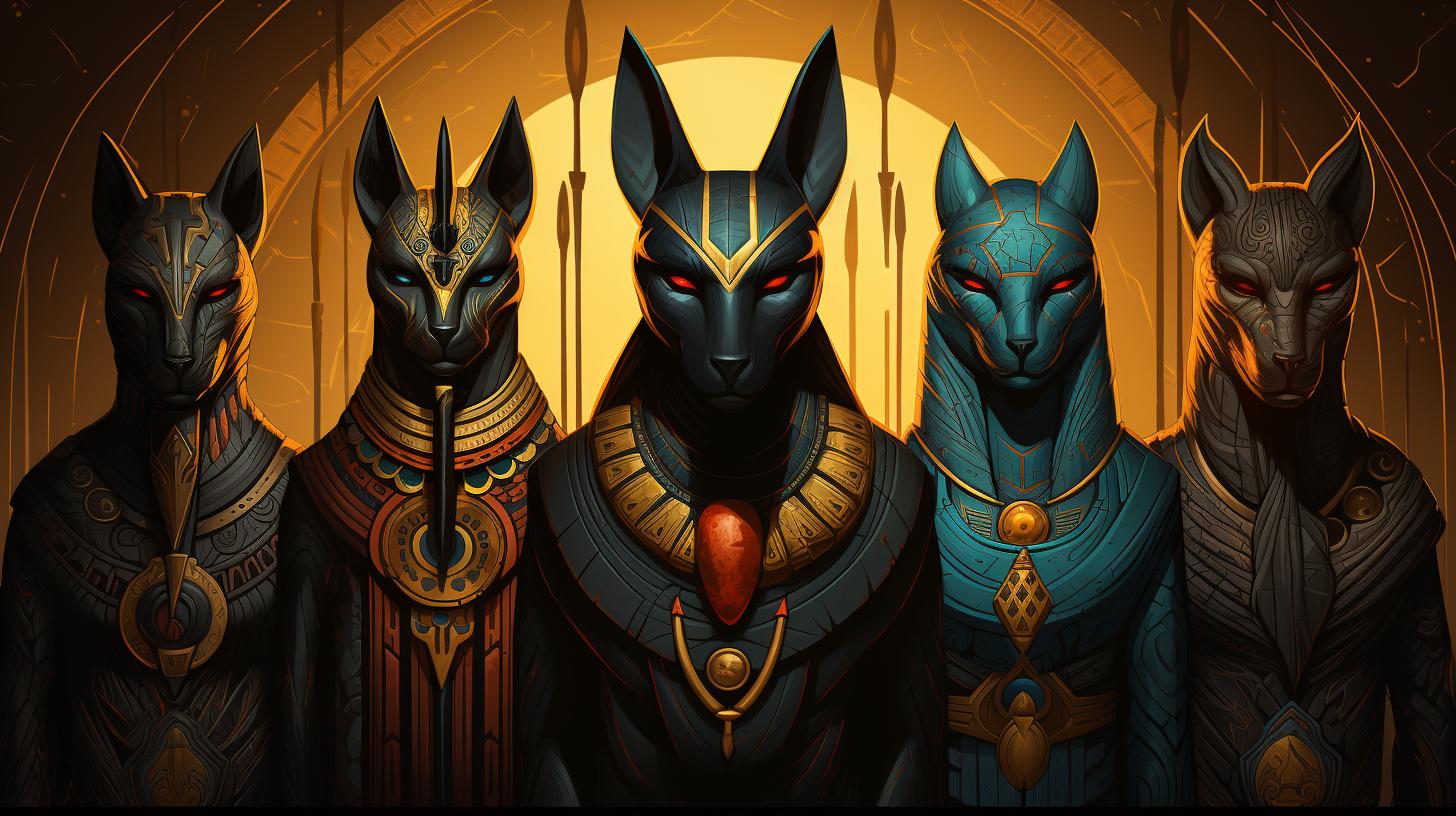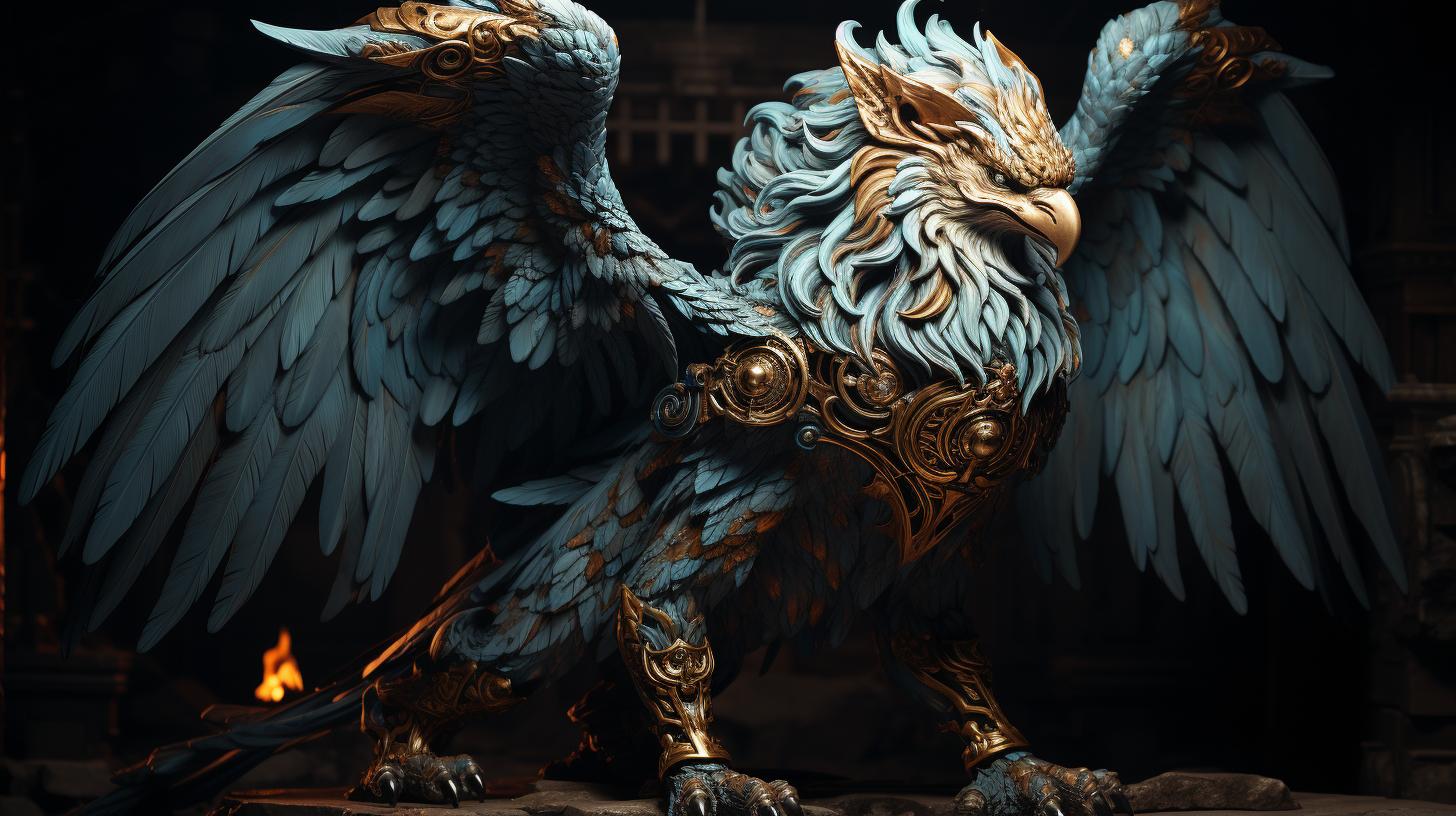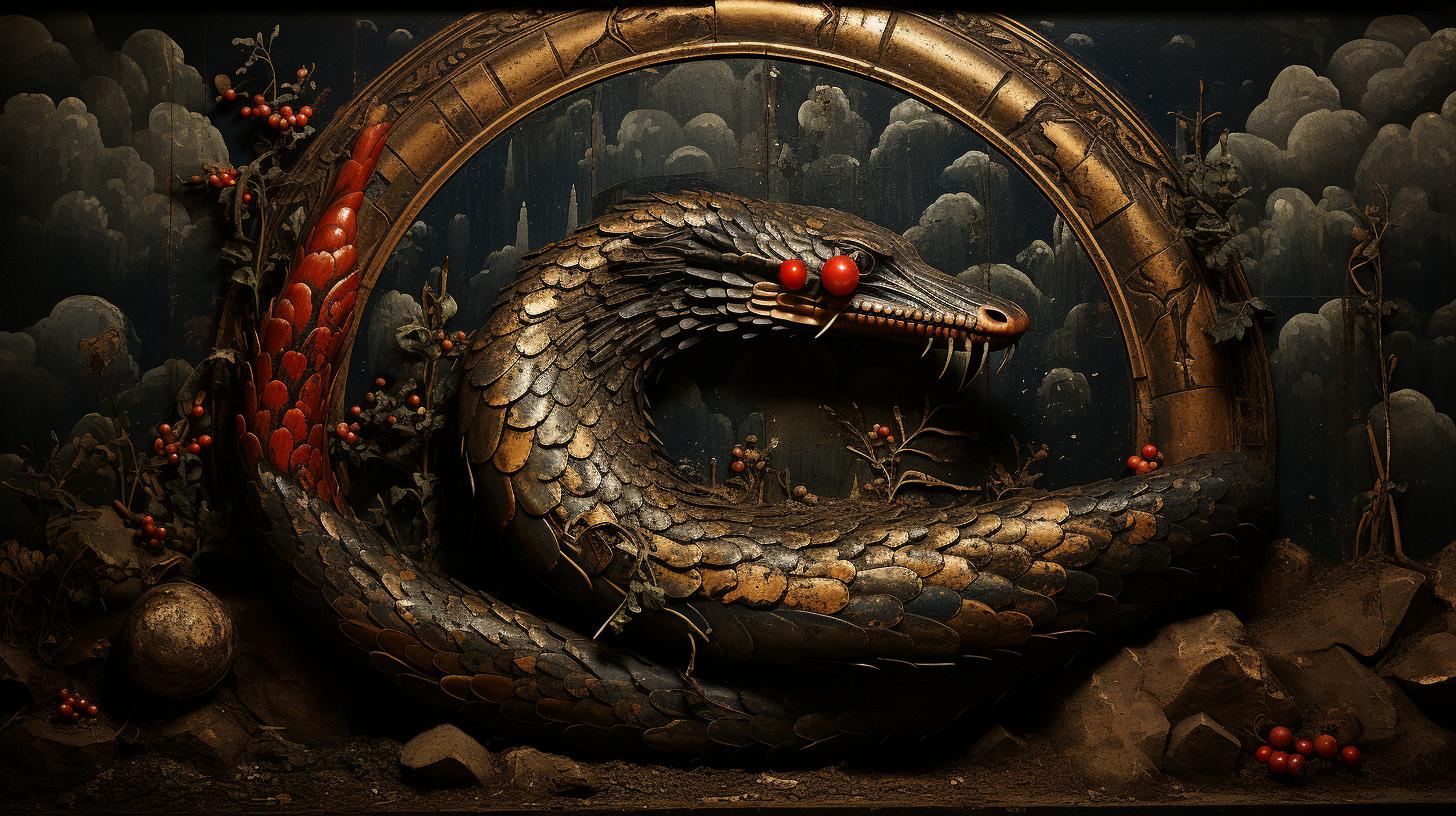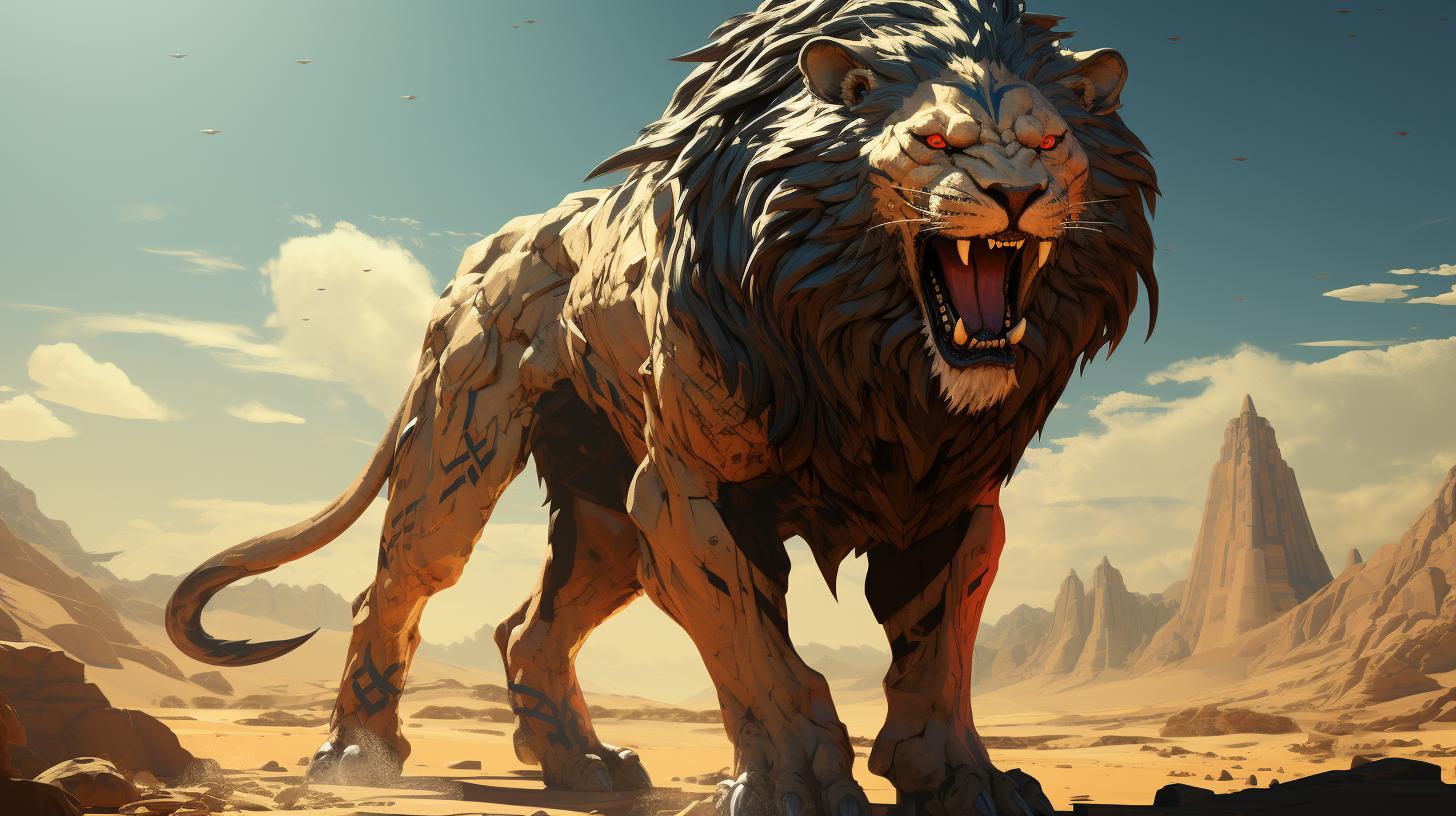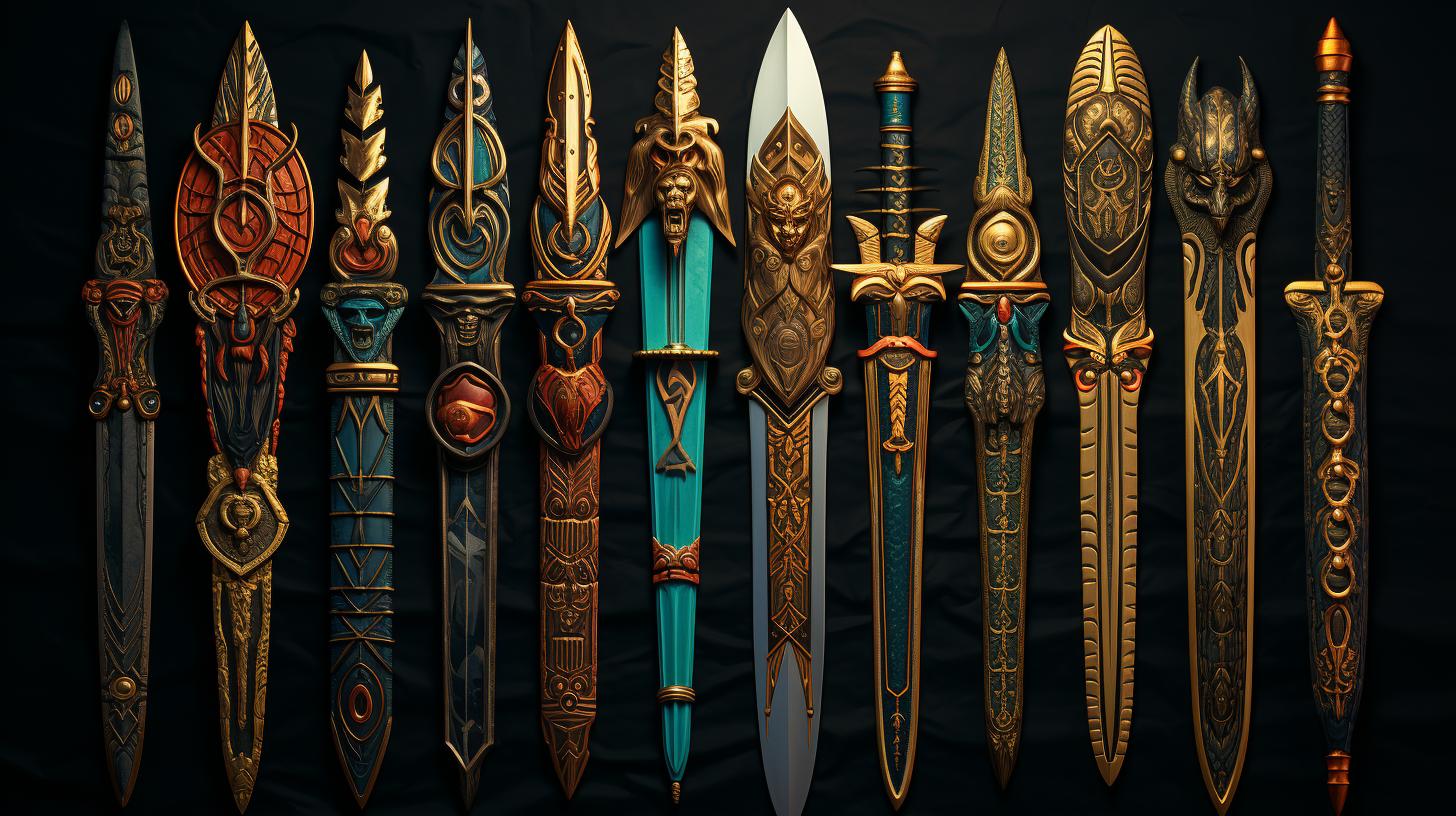Is Egyptian Mythology Still Practiced Today in the US?
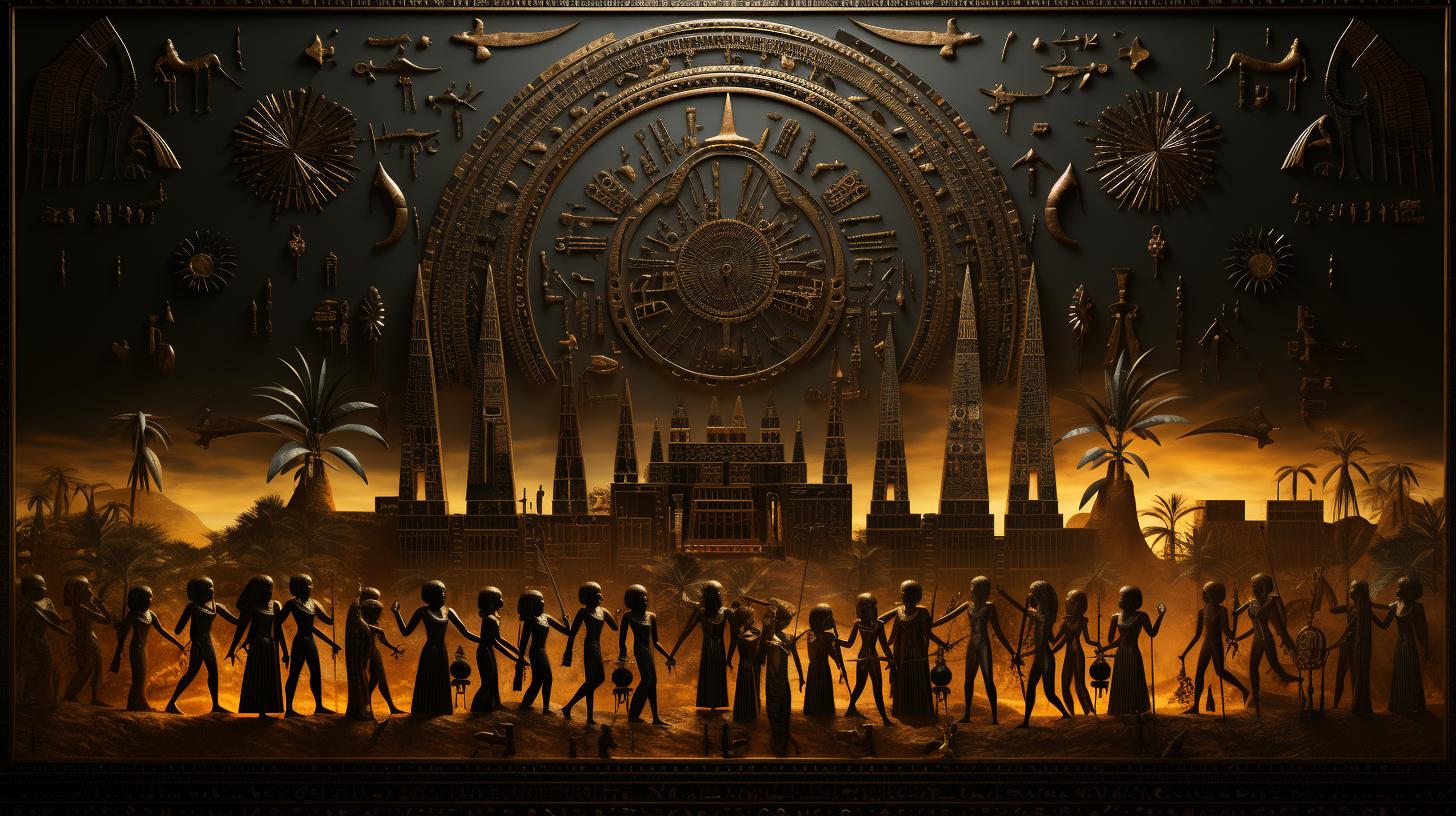
Egyptian Mythology, a significant aspect of ancient Egyptian culture, still captivates interest today. Spanning over 3500 years, it featured a complex system of polytheistic beliefs and rituals. Egyptians worshipped gods such as Amun, Isis, Osiris, and Set in temples and made offerings to gain their favor.
The pharaohs acted as intermediaries between people and gods. While the ancient religion waned with the rise of Christianity, a modern revival called Kemetism attempts to reconstruct these ancient beliefs. Although its following remains small, the enduring legacy of Egyptian mythology continues to influence various religions worldwide.
Overview of Egyptian Mythology
Egyptian Mythology is an intriguing and enduring aspect of ancient Egyptian culture. Spanning over 3500 years, it formed a comprehensive system of beliefs and rituals that played an integral role in the lives of the ancient Egyptians.
This rich mythology revolved around the interaction between Egyptians and their gods, showcasing a complex network of deities, stories, and religious practices.
In ancient Egyptian mythology, gods and goddesses held immense power and influence.
They were worshipped for their roles and abilities in the divine realm, believed to have control over aspects such as creation, fertility, and the afterlife. Stories and narratives portrayed their relationships with each other and with humans, establishing a colorful tapestry of divine interactions and adventures.
The Egyptian civilization constructed grand temples dedicated to their deities, serving as sacred spaces for worship and spiritual connection. These temples acted as focal points for religious rituals, ceremonies, and festivals.
People from all walks of life, including the common Egyptians, were allowed to enter these temples and experience the presence of the gods.
- The Role of Gods and Deities: The Egyptian pantheon comprised numerous gods and goddesses, each with their unique characteristics and attributes.
Some prominent deities included Amun, Isis, Osiris, and Set. These gods were worshipped and venerated through rituals and offerings to seek their favor and blessings.
- Rituals and Offerings: Rituals and offerings played a vital role in the religious practices of ancient Egyptian mythology.
People would perform ceremonies and make sacrifices to appease the gods and ask for their protection and guidance. These rituals varied in scale and complexity, ranging from simple gestures to elaborate ceremonies.
- The Pharaoh as a Divine Figure: The pharaoh, as the ruler of Egypt, held a unique position in Egyptian mythology.
Considered a living manifestation of the gods, the pharaoh acted as a crucial intermediary between the gods and the people. Their rule was intertwined with religious duties and responsibilities, further solidifying the connection between the divine and the mortal realms.
The enduring influence of Egyptian mythology can be seen in various aspects of ancient and modern cultures.
From art and literature to architectural designs and even religious practices, the legacy of Egyptian mythology has left an indelible mark on human civilization.
History and Evolution of Egyptian Religion
The ancient Egyptian religion underwent a dynamic evolution throughout its 3500-year history, adapting to societal changes and external influences.
Ancient Egyptian religion can be traced back to the Predynastic period, around 6000 BCE, where animistic beliefs in spirits and natural forces were prevalent.
With the emergence of a centralized state, religious practices became more organized, eventually developing into a complex system of polytheistic worship.
During the Early Dynastic Period (3100-2686 BCE), the concept of divine kingship took shape, solidifying the Pharaoh’s role as both a political and religious figure.
The Pharaoh was believed to be the intermediary between the gods and the people, possessing divine powers and responsibilities.
As Egypt expanded its influence during the Old Kingdom (2686-2181 BCE), the religion flourished, and temple complexes were built throughout the land.
The construction of monumental pyramids and elaborate tombs reflected the Egyptians’ belief in an afterlife and the eternal nature of the soul.
The Middle Kingdom (2055-1650 BCE) brought a shift in religious focus, with the introduction of speculative theology and an increased emphasis on personal piety.
Pharaohs became more accessible and interacted with commoners, emphasizing unity and stability within the kingdom.
With the invasion of foreign groups during the Second Intermediate Period (1650-1550 BCE), including the Hyksos, there was a blending of religious traditions and a decline in centralized religious authority.
This period marked a transition towards the New Kingdom (1550-1069 BCE), considered Egypt’s golden age.
- During the New Kingdom, Egypt experienced a revitalization of religious practices, marked by a resurgence of temple construction and a renewed focus on the Pharaoh as a divine ruler.
- The religious pantheon expanded during this period, incorporating deities from conquered lands such as Amun, a god worshipped in Thebes.
- The Amarna Period (1353-1336 BCE), under the reign of Akhenaten, brought a brief period of monotheism with the exclusive worship of the solar deity Aten.
However, this religious revolution was short-lived.
- Following the Amarna Period, the religious traditions of the New Kingdom were reestablished, and Egypt experienced a period of religious syncretism, fusing various deities and beliefs.
The Late Period (664-332 BCE) witnessed the rule of various foreign powers, including the Assyrians, Persians, Greeks, and Romans.
These invasions brought foreign religious influences, causing a gradual decline in the practice of traditional Egyptian religion.
Finally, with the rise of Christianity and the advent of the Byzantine Empire in Egypt, ancient Egyptian religion diminished and faced suppression.
The closure of the last Egyptian temple occurred in the 6th century CE, marking the end of an era.
Beliefs and Practices in Ancient Egyptian Mythology
Ancient Egyptian mythology encompassed a rich tapestry of beliefs and practices that shaped the culture and worldview of ancient Egyptians. At the core of their beliefs were the gods and deities, who played a central role in the lives of the people.
The Role of Gods and Deities
The ancient Egyptians believed in a pantheon of gods and goddesses, each associated with various aspects of life, nature, and the cosmos. These deities represented the forces that governed the world, and the Egyptians turned to them for guidance and protection.
The gods and goddesses were seen as both benevolent and powerful, possessing unique characteristics and abilities. For example, Amun was revered as the king of the gods and represented creation and fertility, while Isis was known as a powerful protectress and the embodiment of the ideal mother.
Rituals and Offerings
The Egyptians engaged in elaborate rituals and made offerings to honor and appease the gods. These rituals were seen as a way to establish and maintain a harmonious relationship between humans and deities.
The offerings varied depending on the nature of the god or goddess being worshipped. They could include food, drink, incense, and precious objects. By making these offerings, the Egyptians sought to gain the favor and blessings of the gods, ensuring their well-being and prosperity.
The Pharaoh as a Divine Figure
In ancient Egypt, the pharaoh held a unique and privileged position as a divine figure. Believed to be a descendant of the gods, the pharaoh was revered as a living embodiment of the divine and held great power and authority.
As the intermediary between the gods and the people, the pharaoh played a crucial role in religious ceremonies and rituals. They were responsible for maintaining the cosmic order and ensuring the well-being of their subjects through their connection with the deities.
The pharaoh’s rule was seen as essential for upholding Maat, the principle of harmony and balance that governed the universe and society. Their actions and decisions were believed to directly impact the state of the natural and supernatural worlds.
In conclusion, the beliefs and practices in ancient Egyptian mythology revolved around the worship of gods and deities, engaging in rituals and offerings, and the prominent role of the pharaoh as a divine figure.
These customs shaped the daily lives and spiritual beliefs of the ancient Egyptians, profoundly influencing their culture and worldview.
Temples and Worship in Ancient Egypt
The temples of ancient Egypt held immense significance in the religious and cultural practices of the civilization. Serving as grand structures dedicated to the gods, these temples played a central role in the worship and beliefs of the ancient Egyptians.
Importance and Function of Temples
Temples were regarded as the dwelling places of the gods and were constructed with great precision and grandeur. They served as the primary locations for religious ceremonies, rituals, and offerings, allowing the Egyptians to directly communicate with their deities.
In addition, the temples were not just places of worship but also centers of economic and administrative activities. They accumulated vast wealth in the form of land, livestock, and goods, which were utilized to support the religious practices and the maintenance of the temple grounds.
Small Sanctuaries for Specific Gods
Alongside the grand temples, smaller sanctuaries dedicated to specific gods were scattered throughout Egypt. These sanctuaries provided locals with the opportunity to make offerings and seek favor from the deities associated with those particular locations.
These smaller sanctuaries, known as chapels or shrines, often contained statues or representations of the associated god or goddess. They served as accessible places of worship for the common people, who sought blessings and guidance in their everyday lives.
Festivals and Processions
Festivals and processions played a significant role in the religious calendar of ancient Egypt. These events were joyous occasions that brought the community together to honor specific gods or celebrate important agricultural milestones.
During festivals, statues of the gods were taken out of the temples and paraded through the streets, accompanied by music, dance, and ceremonial rituals. These processions were believed to bestow blessings upon the land and ensure the fertility and prosperity of the community.
Notable among these festivals was the Festival Sed, which commemorated the union of Upper and Lower Egypt, symbolizing the unification of the kingdom. It was a grand celebration of Egypt’s identity and the Pharaoh’s role as the divine ruler.
In conclusion, the temples of ancient Egypt served as vital centers of worship, providing a direct connection between the people and the gods. These grand structures, along with the smaller sanctuaries and the vibrant festivals, formed the backbone of the religious practices in ancient Egypt, deeply ingrained in the culture and beliefs of the civilization.
Education and Hierarchical Structure in the Priesthood
In the ancient Egyptian society, education played a crucial role for those aspiring to become priests. The priesthood was a respected and esteemed position, requiring extensive knowledge and skills. One of the key aspects of priestly education was mastering the reading and writing of hieroglyphics, the intricate and sacred script.
The hierarchy within the priesthood was well-defined, with different ranks and responsibilities. At the pinnacle of the hierarchy stood the pharaoh, who held significant religious authority. Below the pharaoh were high priests, serving in the major temples and acting as intermediaries between the gods and the people.
Lower-ranking priests played vital roles in the daily rituals and maintenance of the temples. They performed various religious ceremonies, tended to the sacred statues of the gods, and ensured the proper functioning of the temple.
These priests had to demonstrate their skills and knowledge through rigorous training and practical experience.
Aspiring priests underwent a comprehensive education that included not only religious teachings but also subjects like mathematics, astronomy, and medicine.
This broad education allowed them to understand and interpret the complex religious texts and rituals, as well as fulfill other administrative duties within the temple.
The education system was organized within temple complexes, where experienced priests imparted their knowledge to the younger generations.
Students had access to religious texts and teachings, and they were guided in understanding the intricate symbolism and mythology associated with the gods.
The education of priests was not limited to intellectual learning but also encompassed religious and ethical training.
They were expected to adhere to strict moral codes and demonstrate piety, humility, and devotion to their duties. Dedication and discipline were valued traits within the priesthood.
Within the hierarchical structure, opportunities for advancement existed based on merit, experience, and personal capabilities.
Exceptional priests who demonstrated exceptional skills and knowledge could rise through the ranks, attaining higher positions of authority and responsibility.
- Mastering hieroglyphics and sacred texts
- Different ranks and responsibilities within the priesthood
- Pharaoh’s religious authority
- Roles of high priests and lower-ranking priests
- Rigorous training and practical experience
- Broad education including mathematics and astronomy
- Imparting knowledge within temple complexes
- Moral codes and ethical training
- Advancement opportunities based on merit
Influences and Interactions with Other Cultures
The rich history of ancient Egypt brought about interactions and influences from various cultures throughout its existence.
Let’s explore the impact of Assyrians, Persians, Greeks, Romans, and Christianity on Egyptian mythology.
Assyrians, Persians, Greeks, and Romans
The ancient Egyptians encountered different civilizations through trade, conquest, and cultural exchanges. These interactions resulted in the assimilation of foreign deities into Egyptian mythology. For instance, during the Assyrian and Persian rule, Egyptian gods and goddesses merged with their deities, creating syncretic beliefs and practices.
Following the conquest of Egypt by Alexander the Great, Greek influence took root. The Greek rulers, known as the Ptolemies, adopted aspects of Egyptian religion and associated their deities with Egyptian counterparts.
This blending led to the development of new religious cults and the worship of hybrid Egyptian-Greek deities.
With the Roman conquest of Egypt, a similar pattern emerged. Egyptian gods were often identified with Roman gods, further integrating the cultures.
This syncretism resulted in the worship of combined deities that combined elements from both Egyptian and Roman mythology.
Impact of Christianity on Egyptian Mythology
Christianity’s emergence and spread in Egypt had a profound impact on Egyptian mythology. As this new monotheistic religion gained influence, it clashed with the polytheistic beliefs of ancient Egypt, gradually leading to the decline of traditional Egyptian religious practices.
The strict nature of Christianity did not allow for the syncretization of Egyptian mythology with other polytheistic religions, leading to a diminishing practice of the ancient Egyptian faith. As Christianity became the dominant religion in Egypt, temples and rituals associated with the ancient gods were abandoned or repurposed for Christian worship.
While the ancient Egyptian religion experienced a revival during the Late Period of Egypt, ultimately, it faded away, and the last Egyptian temple was closed in the 6th century AD. However, the enduring influence of Egyptian mythology can still be seen in various contemporary religions and cultural practices around the world.
Decline and Disappearance of Ancient Egyptian Religion
The ancient Egyptian religion, which had endured for thousands of years, began to decline and eventually disappeared under the influence of external factors and changing religious beliefs.
6.2. Impact of Christianity on Egyptian Mythology
One significant factor that contributed to the decline of ancient Egyptian religion was the rise of Christianity.
With the spread of Christianity in Egypt, the rigid nature of the Christian faith did not allow for syncretism with the ancient Egyptian religion or other polytheistic beliefs.
As Christianity gained traction and became the dominant religion in Egypt, the practice of the ancient Egyptian religion started to diminish.
Christian missionaries and leaders discouraged the worship of Egyptian gods and promoted the worship of their Christian deities.
Over time, Christian influence led to the closing of the last Egyptian temple in the 6th century AD, marking the end of the ancient Egyptian religious practices.
Despite the decline, it is important to note that remnants of ancient Egyptian religious beliefs and practices can still be found in various aspects of modern Egyptian culture. Elements of the ancient religion have seeped into folk traditions, folklore, and even certain festivals and celebrations.
However, the complete disappearance of the original religious system is evident as its formal practice gradually faded away and was replaced by newer religious systems.
Modern Practices and Revival of Egyptian Mythology
Ancient Egyptian mythology may have faded away, but its influence can still be seen in contemporary times.
While the ancient religious practices are no longer actively followed in their original form, there are modern movements that seek to revive and reconstruct the ancient beliefs. One such movement is Kemetism, a neo-pagan Egyptian religion.
Kemetism: A Neo-Pagan Egyptian Religion
Kemetism, also known as Egyptian neopaganism, aims to reconstruct and revive the religious beliefs of ancient Egypt. Drawing inspiration from historical sources, archaeological research, and personal spiritual experiences, Kemetists strive to recreate the practices and rituals of the ancient Egyptians.
Kemetism emphasizes a deep connection with the deities of ancient Egypt, seeking to establish a personal relationship with them through rituals, offerings, and devotion. They honor gods and goddesses such as Ra, Isis, Osiris, and Horus, among others.
The rituals performed by Kemetists often involve the recitation of ancient hymns and prayers, as well as the use of specific symbols and incense. Offerings, such as food, drink, or symbolic representations, are presented to the deities.
These rituals aim to establish a spiritual connection and seek the blessings and guidance of the ancient Egyptian gods.
Limited Influence and Followers
While Kemetism and other modern practices of Egyptian mythology have gained some followers, their influence remains limited. These revivalist movements generally attract individuals with a particular interest in ancient Egyptian culture, history, and spirituality.
The number of active practitioners of Kemetism and related neo-pagan traditions is relatively small compared to mainstream religions. Their gatherings and rituals are often confined to specific local communities or online platforms where like-minded individuals share their experiences and knowledge.
It is worth noting that the revival of ancient Egyptian mythology does not seek to replace or compete with established religious traditions. Instead, it offers an alternative spiritual path for those drawn to the mystique and symbolism of ancient Egypt.
Enduring Legacy and Influence of Egyptian Mythology
The enduring legacy of Egyptian mythology is evident in various aspects of global culture and religious practices. Elements of ancient Egyptian symbolism, art, and stories can be found in literature, art, and cinema, serving as sources of inspiration for creators throughout history.
Moreover, the concepts and themes explored in ancient Egyptian mythology continue to resonate with individuals seeking to understand the mysteries of life, death, and the divine. The enduring fascination with Egyptian mythology speaks to its timeless allure and the profound impact it has had on our collective imagination.
Enduring Legacy and Influence of Egyptian Mythology
Egyptian mythology, with its rich tapestry of gods, rituals, and beliefs, has left an indelible mark on the ancient world and continues to influence cultures and religions even today.
The stories and legends of Egyptian deities have fascinated scholars, artists, and enthusiasts for centuries.
From the powerful and regal Amun to the nurturing and protective Isis, these gods and goddesses represented various aspects of life and the natural world, providing a complex framework for understanding the universe.
Throughout history, Egyptian mythology has influenced countless civilizations that came into contact with Egypt. The Assyrians, Persians, Greeks, and Romans all absorbed elements of Egyptian beliefs, integrating them into their own pantheons and mythological traditions.
- Egyptian influence on Greek mythology is particularly notable, as many Greek gods and goddesses were identified with their Egyptian counterparts. For instance, the Greek god Zeus shared similarities with the Egyptian Amun.
- Roman mythology also drew inspiration from Egypt, transforming Egyptian deities like Isis into the Roman goddess of childbirth.
Moreover, Egyptian symbols, such as the ankh, the Eye of Horus, and the Djed pillar, have found their way into various cultures and continue to have symbolic significance today.
These symbols represent concepts like life, protection, and stability, transcending time and borders.
In contemporary society, Egyptian mythology still resonates with a dedicated community of enthusiasts who seek to revive and reinterpret the ancient belief system.
Kemetism, a neo-pagan Egyptian religion, aims to reconstruct the practices and spiritual essence of the ancient Egyptians. Though it has a relatively small following, Kemetism keeps the flame of Egyptian mythology burning, preserving some of the rituals and traditions that once flourished in ancient Egypt.
Furthermore, the influence of Egyptian mythology can be found in modern popular culture, including literature, films, art, and even fashion. The mysterious allure of the Egyptian gods and their tales continues to captivate and inspire creative minds across various mediums.
While the practice of ancient Egyptian mythology may have dwindled over time, its enduring legacy can be felt in the way we perceive and appreciate ancient civilizations, religious beliefs, and the intricate tapestry of human cultural heritage.
.











